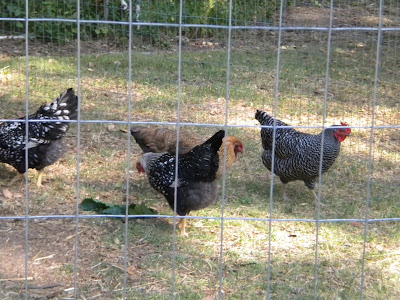The principle that function follows form holds true for the pruning and training of fruit trees. The geometry that a pruner encourage is purposeful and dictates the growth pattern of a tree. There are generally two different pruning methods: modified central leader and open-centered. We learned about the former and not the latter although both are in practice. This description will pertain to all temperate zone, deciduous fruit trees, excluding citrus, guavas, etc. that are grown on dwarf or semi-dwarf rootstalks. This included apples, pears, peaches, nectarines, plums, etc. The overall tree structure, when viewed from afar, should resemble a cone or isosceles triangle. This will allow for maximum light penetration. Since dwarf or semi-dwarf fruit trees are generally fairly short (10 to 15 feet tall), there will be two tiers of fruit producing braches. From the main trunk, central leader, primary branches radiate out in all directions and ideally the first tier should have 5 to 9 branches. There should be a 1 to 3 foot gap on the trunk between the highest first tier primary and the lowest second tier primary branches. The second tier should have similarly radiating primary branches from the trunk. These main branches are the primary scaffold of the tree and each has multiple lateral and sub-lateral branches. It is important that lateral branches are perpendicular and not parallel to the primary branch. When primary branches are vertical hormones and resources encourage rapid, upward vegetative growth and not fruit production. Furthermore, these will compete with the primary leader. Therefore, weights or ties with stakes can be used to direct both verticality and radial direction of growth. Primary branches should growth at a 45º to 75º angle from the trunk. Fruit trees, when young, are incredibly malleable and branches can be cut and trained to conform to a certain geometry.
For temperate, deciduous fruit trees, only two or more year old wood will produce any fruit, unlike evergreen trees that bear on terminal growth. Shortening cuts can be used to trim branches back to fruit buds on older growth. Cutting branches during fruit production but before the third week of July (approximately) will encourage fruit production and not vegetative growth the following year. However, pruning the winter time encourages growth, therefore it is important to trim unwanted growth during the summer and wanted growth during the winter.



